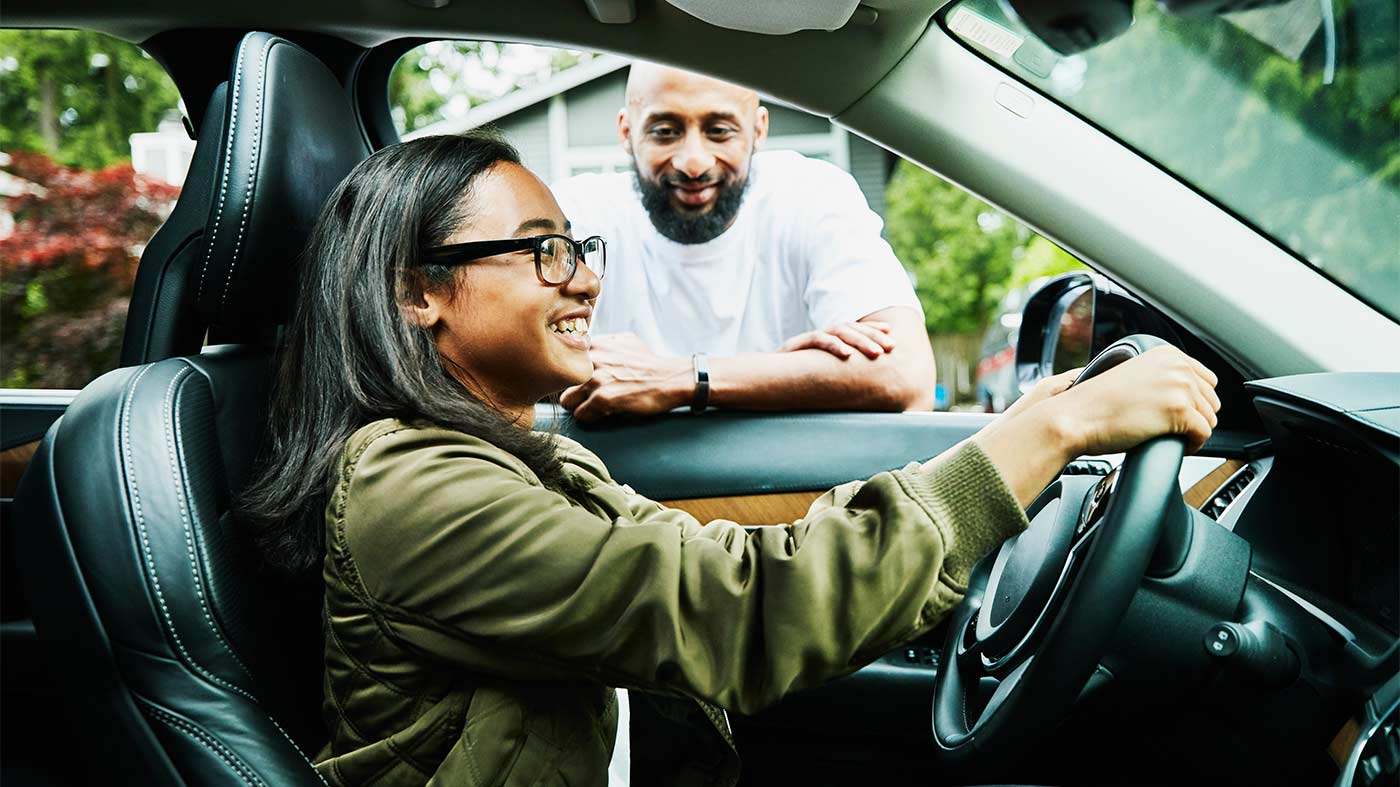The Road to Safe Teen Driving
Advanced driver-assistance systems and smartphone technologies could help your teen drive more safely—and ease your mind.
 Thomas Barwick/Getty Images
Thomas Barwick/Getty Images
If you’re a teen, one of life’s most exciting milestones might be getting your driver’s license and enjoying the sense of independence that comes with it.
If you’re the parent of a young driver, you also might feel excitement—along with a lot of concern.
In the U.S., motor vehicle crashes are the leading cause of death for teens 15-18 years old, according to the U.S. Department of Transportation. The Insurance Institute for Highway Safety reports that teen drivers are worse at recognizing hazards and controlling the vehicle than more experienced drivers. Crash rates for teens are nearly four times those of drivers 20 and older, per mile driven.
While their lack of driving experience could put them at more risk on the road, there are measures to help ease your mind and keep them safer.
Parenting young drivers
Parents can be the biggest influencers on teens’ choices behind the wheel, according to the National Highway Traffic Safety Administration. The Centers for Disease Control and Prevention offers tips and resources for parents of young drivers that include educating yourself about your state’s teen driving laws and creating a parent-teen driving agreement.
Technology also can help alleviate some of the stress that comes with your teen driving. Crash avoidance features in newer vehicles and teen-specific vehicle technologies—such as speeding prevention, extended seat belt reminders, interlocks and nighttime curfew violation alerts—could potentially prevent up to three quarters of fatal crashes involving young drivers, according to a study by the Insurance Institute for Highway Safety.
The study also examined the potential safety benefits of three crash avoidance features that are currently available: front crash prevention, lane departure prevention and blind spot monitoring.
When it comes to the safest cars for teens, Kelley Blue Book shares their list of the best cars for teens. The checklist includes safety features, types of cars to avoid and car shopping tips.
AAA recommends that parents and caretakers discuss the benefits and limitations of advanced driver assistance systems (ADAS) with their young drivers.
ADAS technologies could help your teen drive more safely.
Learn How >>Teen driving without texting
Talking on the phone and texting while driving has become a widespread issue. The ideal way to prevent cellphone usage while driving is to store the phone beyond arm’s reach, such as in the console or glove box.
If parents want an extra line of defense, there’s a setting on many phones to block calls and texts while driving. In addition, here are six apps that help prevent texting while driving.
Of course, parents and guardians must model safe driving by also staying off screens while on the road.
These measures may not eliminate worry or your teen’s risk of an auto crash, but even if these technologies are just moderately effective, they could prevent many injuries and deaths, according to the Insurance Institute for Highway Safety.
Car safety research
The AAA Foundation for Traffic Safety was established in 1947 to promote safe mobility through conducting relevant and timely research. The foundation shares key findings with AAA partners and provides road users with critical facts to combat various traffic safety challenges.
Initially, projects were related to safety patrols and driver education, but they’ve since expanded to include four research priorities:
- Driver behavior and performance
- Emerging technologies
- Roadway systems and drivers
- Vulnerable road users
Visit the AAA newsroom for research regarding young drivers.